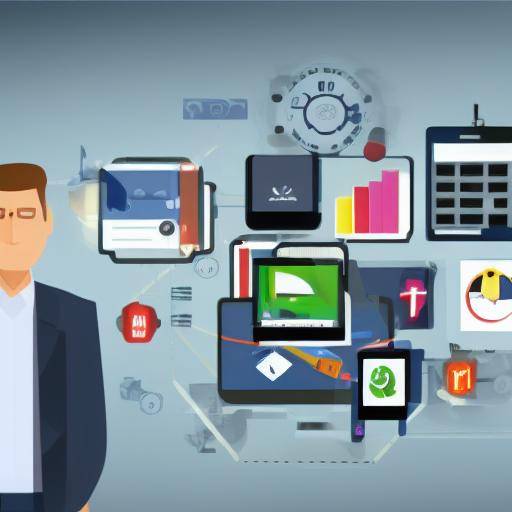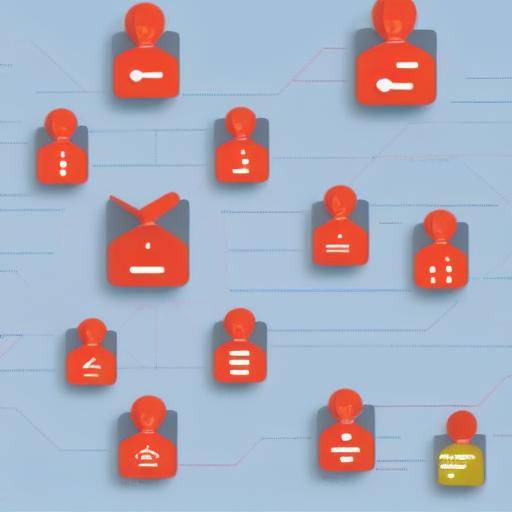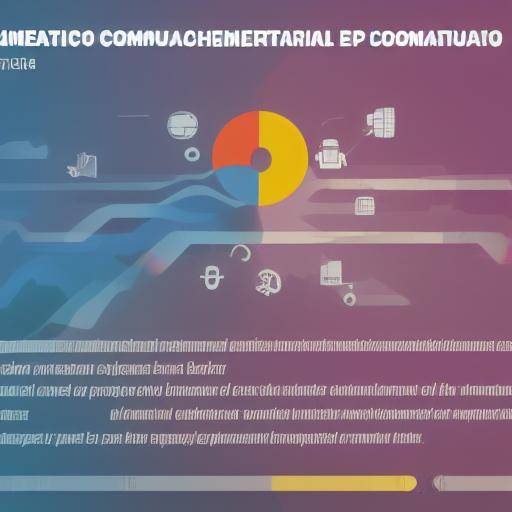
Introduction
Technology has revolutionized the way we work and has completely transformed labour relations in all areas. From task automation to digital communication, technological advances have significantly altered labor dynamics. In this article, we will explore in depth the impact of technology on labour relations, analyzing its benefits, challenges, practical applications, future trends and much more. Join us on this journey to understand how technology is reshaping the job landscape and how we can adapt to these changes to maximize their potential.
History and Background
The intersection between technology and labour relations has its roots in the industrial revolution, which marked the beginning of process automation and production machining. As technology continued to evolve, new forms of work emerged, from the introduction of computers in offices to the widespread adoption of the Internet and global connectivity. This evolution has led to greater flexibility in the way people work, as well as the creation of new job opportunities.
In the twenty-first century, we witnessed unprecedented advances in technology, such as artificial intelligence, automatic learning and the Internet of Things (IoT), which have further altered labour dynamics. These advances have led to the creation of jobs specialized in technology, the redefinition of traditional roles and the growing demand for digital skills in the labour market.
Analysis in Deep
Benefits of Technology in Labour Relations
Technology has provided a number of significant benefits in the working environment. Repetitive task automation has released time for employees to focus on more strategic and creative activities. Interconnectivity has facilitated remote collaboration, allowing teams to work together from anywhere in the world. In addition, technology has enabled the collection and analysis of large-scale data, which has improved evidence-based decision-making.
Challenges and Ethical Considerations
However, the impact of technology on labour relations is not without challenges. Automation has raised concerns about the loss of jobs, especially in traditionally labour-dependent sectors. In addition, technology has also widened the digital divide, which has created challenges of inclusion and accessibility in the workplace. It is essential to address these challenges ethically and equitably to ensure that all workers can benefit from technological innovations.
Current Trends and Futures
At present, we witnessed rapid developments in the field of technology and labour relations. The adoption of cloud collaboration tools, the rise of remote work and the integration of artificial intelligence into recruitment processes are only the beginning. As we enter the future, we are likely to see a greater focus on labour cybersecurity, artificial emotional intelligence and change management in a constantly evolving digital working environment.
Comprehensive review
Practices and Best Practices
The practical applications of technology in labour relations cover a wide range of areas, from optimizing time management and productivity to improving employee experience through digital platforms. Best practices include the implementation of technology training processes for employees, the promotion of a digitally competent labour culture and the development of sound cybersecurity policies to protect confidential information.
Perspectives of Experts and Future Perspectives
Experts in the field of technology and labour relations predict a continuous change in the way organizations operate and manage their staff.They talk about the need to adopt an agile and adaptable mentality to keep up with technological innovations. In addition, they highlight the importance of continuing training in technical skills and the understanding of ethics in relation to the implementation of disruptive technologies in the working environment.
Comparative analysis
The comparative analysis between technology, its impact and labour relations reveals both similarities and significant differences. While technology drives change and operational efficiency, its impact on labour relations can generate tensions in terms of equity, job security and emotional well-being. However, it is crucial to recognize that technology also presents opportunities to promote flexibility, innovation and labour empowerment.
Practical Tips and Accessible Recommendations
To adapt to the digital era, it is essential to adopt a proactive approach to integrating technology into labour relations. Some practical councils include the promotion of an organizational culture based on confidence and transparency, the development of the growth mentality and the establishment of policies that guarantee equity and inclusion in the digital working environment.
Industry ideas and Expert Reviews
Emerging trends in the intersection of technology and labour relations are subject to intense scrutiny by industry experts. In a context where automation and artificial intelligence are redefining labour roles, questions arise about organizational restructuring, training in digital skills and protection of workers' rights in an increasingly technological environment.
Case Studies and Real Life Applications
Case studies that illustrate the practical application of technology in labour relations provide a valuable insight into how companies are addressing challenges and taking advantage of opportunities in this space. From the implementation of artificial intelligence-based human resources management systems to the creation of technology-enabled flexible working environments, these cases demonstrate the diversity of approaches to effectively integrating technology into the working environment.
Future Trends and Predictions
By projecting the future of technology in labour relations, it is clear that digital transformation will remain a focal point for organizations in all sectors. The integration of artificial intelligence into labour decision-making, the advancement of virtual reality in labour training and the continuing approach to cybersecurity are expected to be central to business agendas.
Conclusion
The impact of technology on labour relations is a topic that will continue to be crucial as we move forward in the digital era. The need to adapt, innovate and proactively address the ethical and practical challenges of technology in the working environment will be critical to the long-term success of organizations and the well-being of workers. As we enter an increasingly technological future, it is essential to maintain a people-centred approach to ensure that technology improves, rather than compromises, labour relations.
Frequently asked questions
1. How does technology affect the personalization of labour relations?
The technology allows greater personalization in working relationships by facilitating detailed monitoring of individual performance, creating adaptive learning experiences and more personalized communication between employees and employers.
2. What are the main ethical challenges in the application of monitoring technologies in the working environment?
The privacy of employees, transparency in the use of monitoring data and equity in the application of monitoring technologies are some of the most outstanding ethical challenges in the working environment.
3. How can technology promote diversity and inclusion in the workplace?
Technology can promote diversity and inclusion in the workplace by facilitating access to job opportunities for people from different geographical locations, skills and backgrounds, while providing tools to ensure equity in recruitment, selection and professional development processes.
4. What are the implications of artificial intelligence in decision-making related to talent management?
Artificial intelligence can improve decision-making related to talent management by analyzing large volumes of data to identify patterns and trends, helping to optimize the allocation of human resources, recruitment and retention of talent.
5. What is the role of technology in promoting welfare?
Technology plays a key role in promoting work well-being by facilitating remote stress management, providing access to mental health resources and fostering flexible working environments that are tailored to the individual needs of employees.
6. How can organizations prepare for future changes in technology-driven labour relations?
Organizations can prepare for future changes in technology-driven labour relations by adopting a continuous adaptation mentality, investing in digital skills training, fostering innovation and keeping abreast of emerging technological trends.
In conclusion, the impact of technology on labour relations is profound and multisectoral, and its influence will remain fundamental in the future of work. Understanding these dynamics and the implementation of sound practices that balance technological innovation with well-being and work equality are key elements in effectively embracing this digital evolution in the working environment.






















































